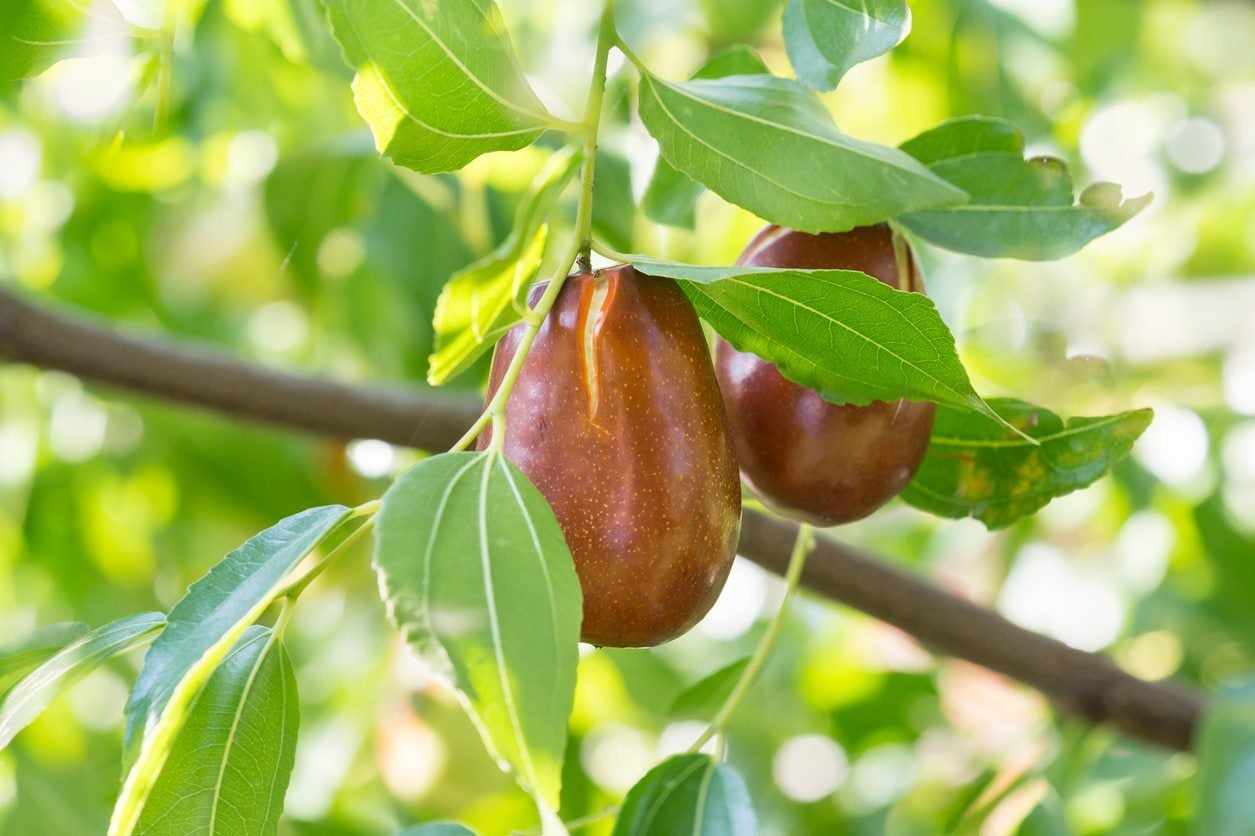
Hailing from China, jujube trees have been cultivated for more than 4,000 years. The lengthy cultivation may be a testament to many things, not the least is their lack of pests and ease of growing. Easy to grow they may be, but can you grow a jujube in a container? Yes, growing jujube in pots is possible; in fact, in their native China, many apartment dwellers have potted jujube trees on their balconies. Interested in container grown jujube? Read on to find out how to grow jujube in containers.
About Growing Jujube in Containers
Jujubes thrive in USDA zones 6 through 11 and love the heat. They require very few chill hours to set fruit but can survive temperatures down to -28 degrees F. (-33 C.). They do need lots of sun in order to set fruit, however. Generally, more suited to growing in the garden, growing jujube in pots is possible and may even be advantageous, as it will allow the grower to move the pot into full sun locations throughout the day.
How to Grow Potted Jujube Trees
Grow container grown jujube in a half barrel or another similarly sized container. Drill a few holes in the bottom of the container to allow for good drainage. Place the container in a full sun location and fill it half full of a well-draining soil such as a combination of cactus and citrus potting soil. Mix in a half a cup (120 ml.) of organic fertilizer. Fill the rest of the container with additional soil and again mix in a half cup (120 ml.) of fertilizer. Remove the jujube from its nursery pot and loosen the roots. Dig a hole in the soil that is as deep as the previous container. Set the jujube into the hole and fill in around it with soil. Add a couple of inches (5 cm.) of compost atop the soil, making sure that the trees graft remains above the soil line. Water the container thoroughly. Jujubes are drought tolerant but need water to produce juicy fruit. Allow the soil to dry out a few inches (8 cm.) before watering and then water deeply. Fertilize and apply fresh compost each spring.
Sign up for the Gardening Know How newsletter today and receive a free copy of our e-book "How to Grow Delicious Tomatoes".

Amy Grant has been gardening for 30 years and writing for 15. A professional chef and caterer, Amy's area of expertise is culinary gardening.
